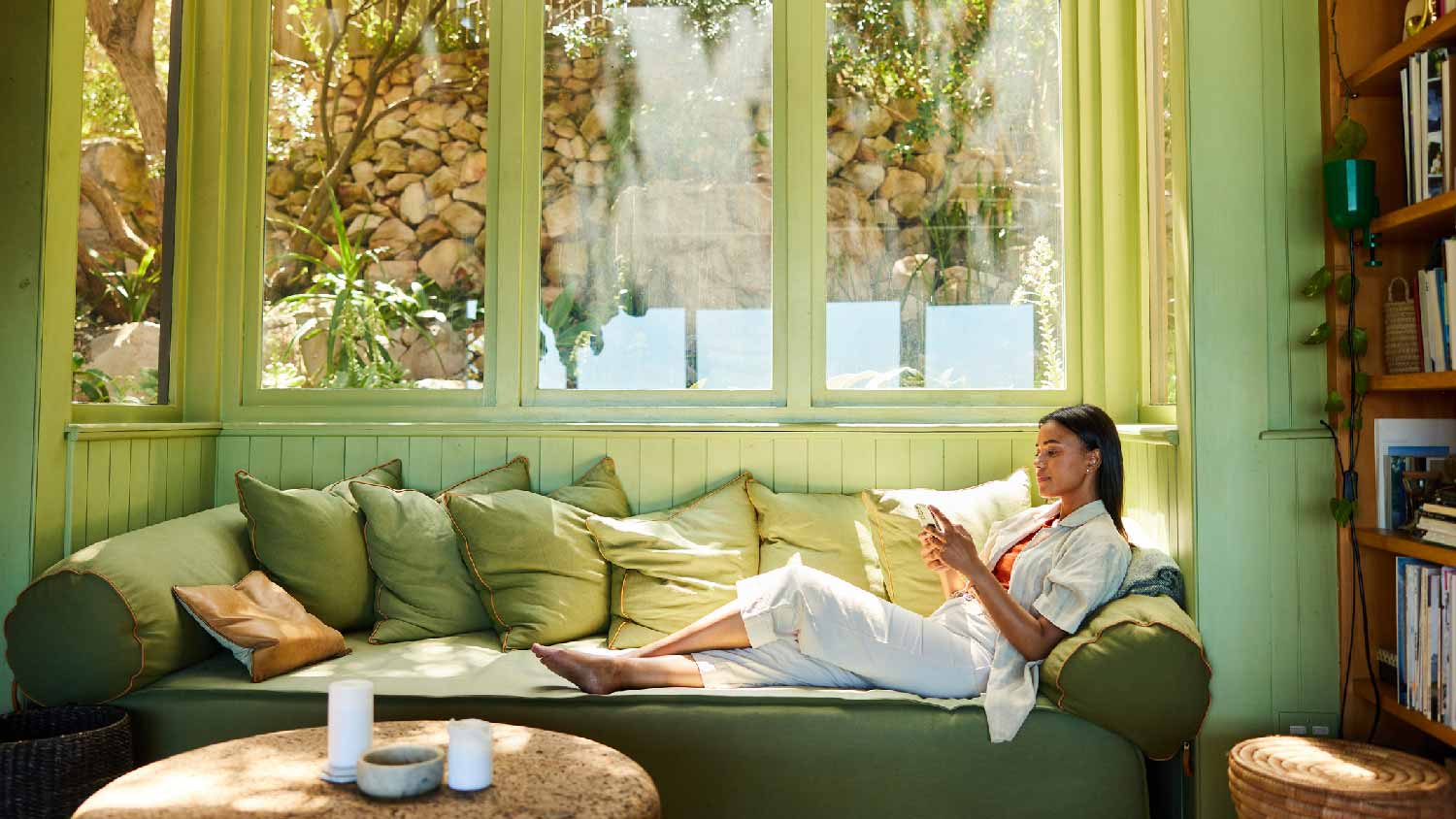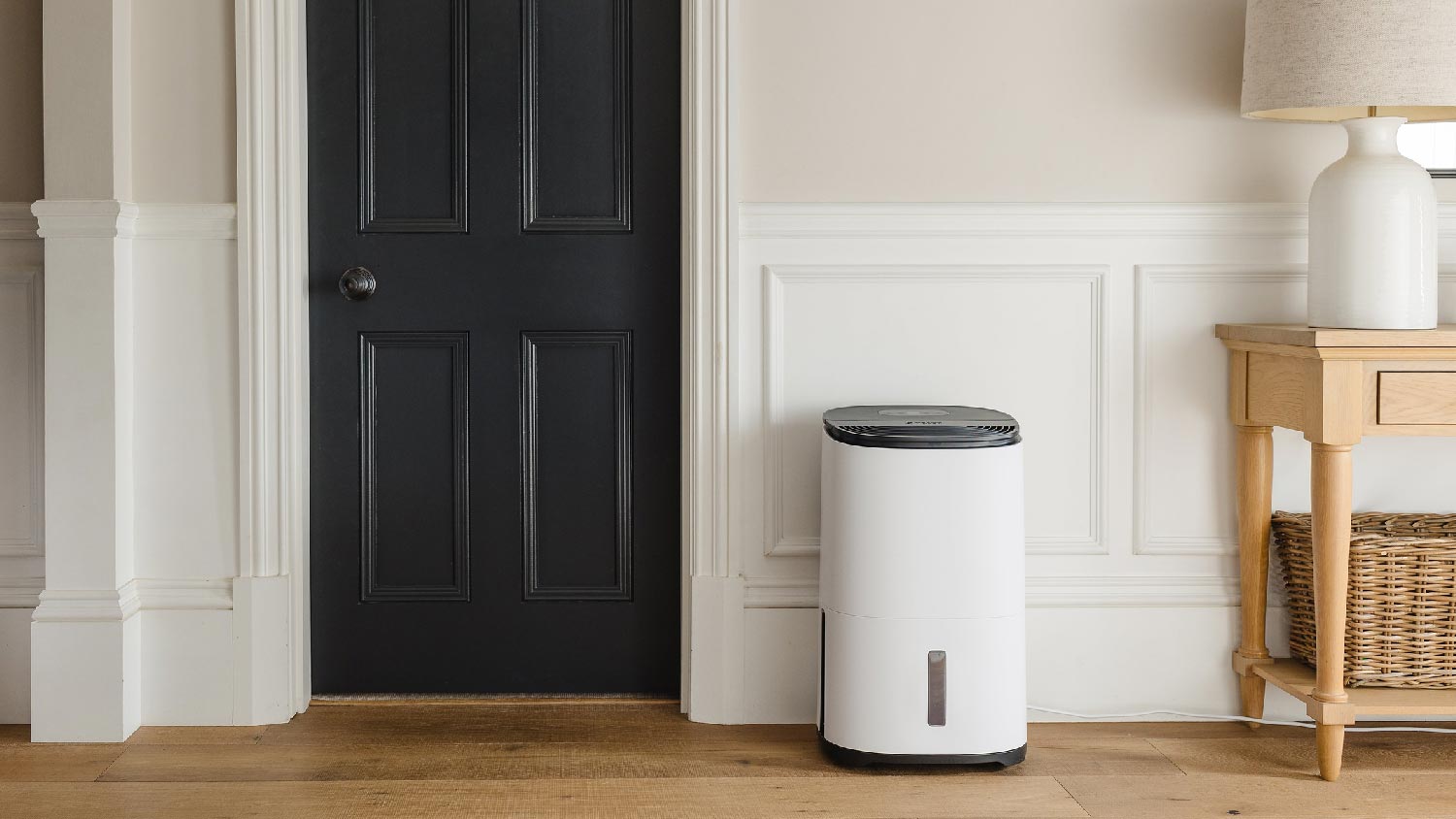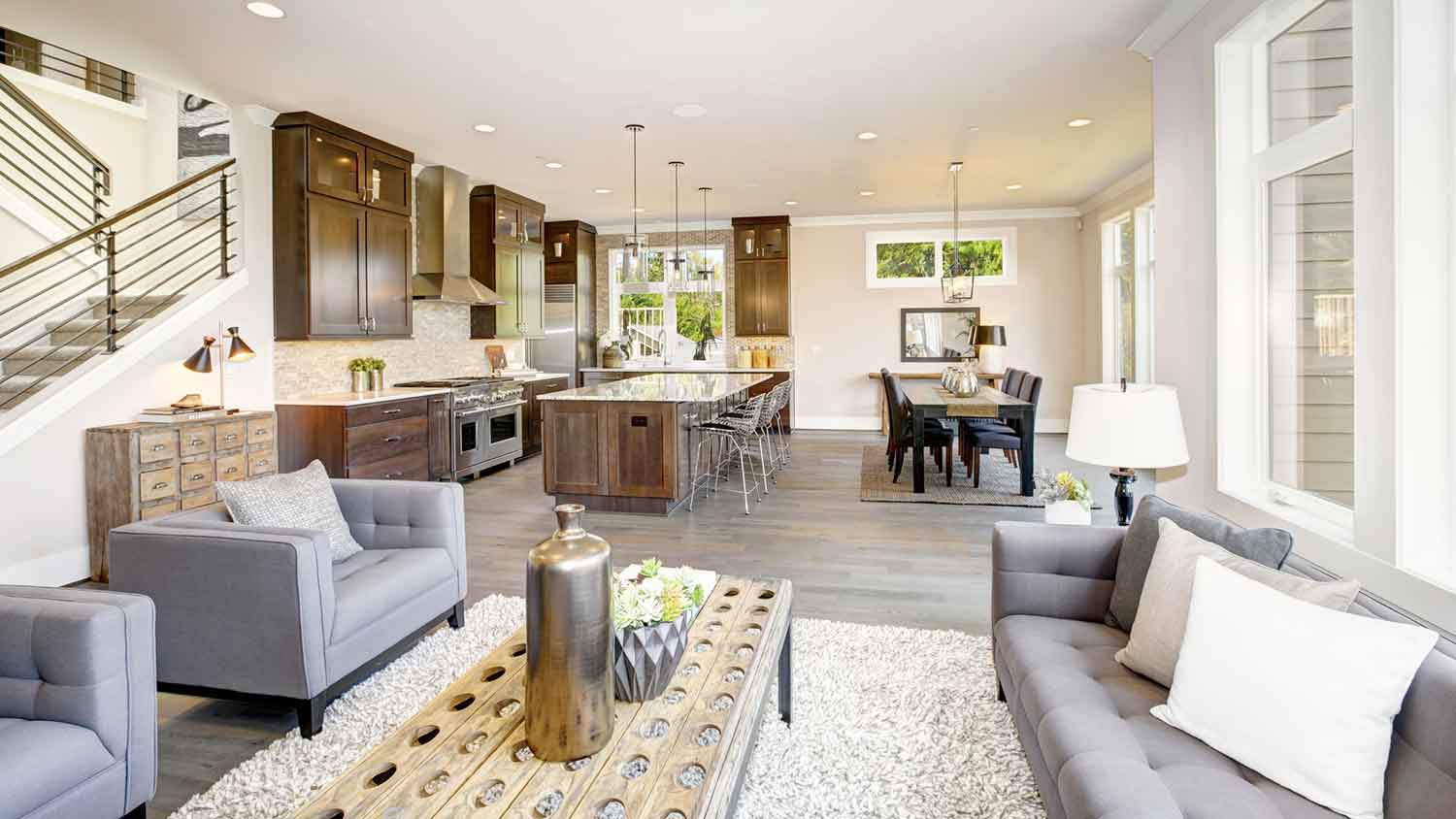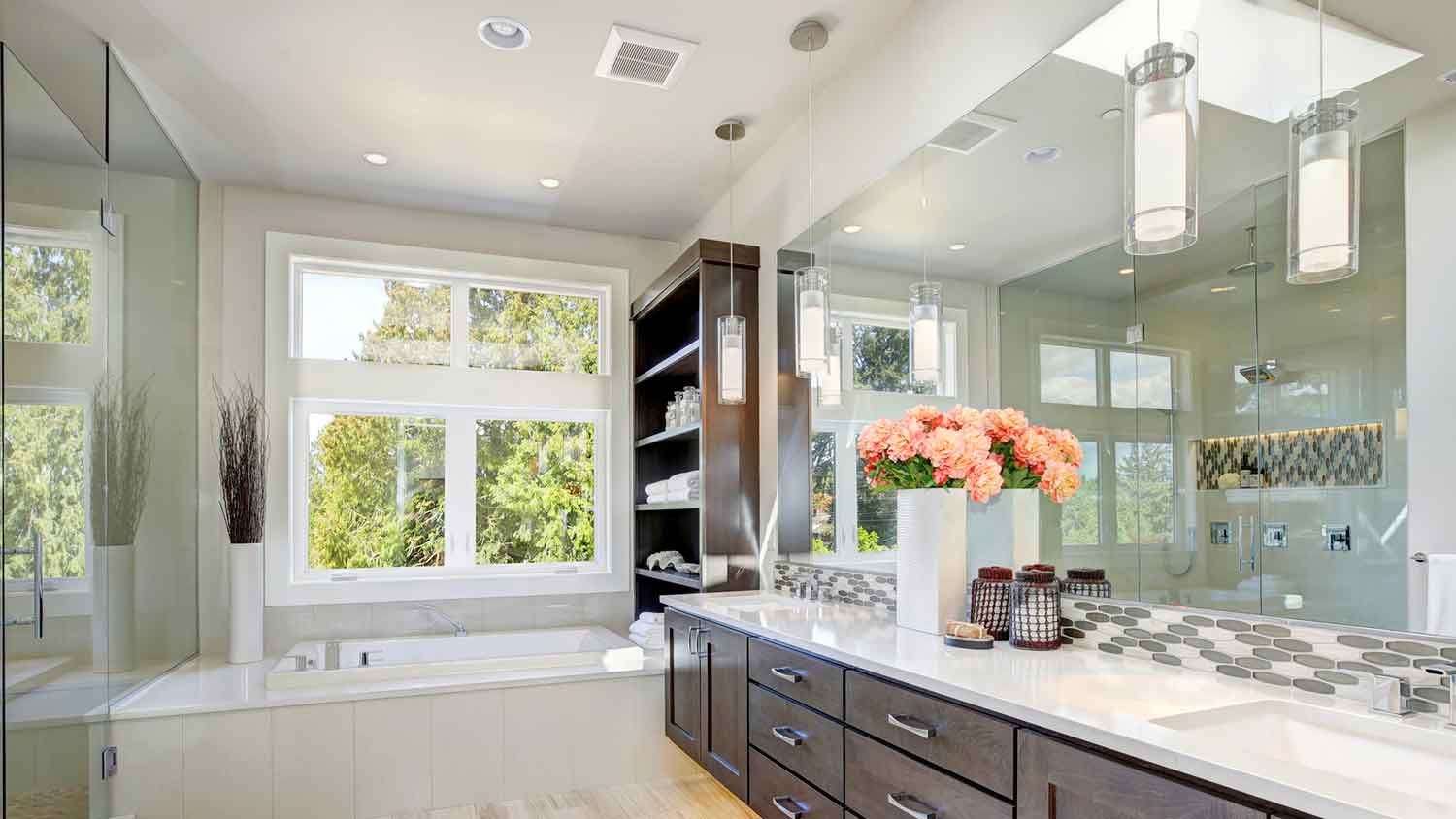The Best Temperature for Sleep
If you can’t fall asleep, check your thermostat, stat


The best temperature for sleep is between 60 and 67 degrees Fahrenheit
Sleeping in a hot room can disrupt REM sleep
Control humidity, invest in quality window treatments, and lower the thermostat to create the right cool environment for sleep
While the effect temperature has on sleep is still being studied, much research has been done on a related topic: the best temperature for sleeping. If your partner insists on keeping the bedroom a toasty 75 degrees, you can now argue that scientists say that’s not advised. Keep your bedroom 60 to 67 degrees Fahrenheit to sleep like a baby.
What Is the Ideal Sleeping Temperature?
Everybody is different, but scientists believe that the best temperature for sleeping is between 60 to 67 degrees Fahrenheit. Your circadian rhythm dictates your sleep-wake cycle and the amount of energy you need throughout the day, as well as the average temperature of your body.
As you get closer to bedtime, your body temperature drops, indicating to your brain that it’s time for bed. Similarly, as the sun comes up, your body temperature begins to rise again, signaling a new day is ahead.
Researchers at the University of Michigan discovered that our circadian clock monitors the external temperature to know when to tell our bodies to sleep, which is why the temperature of your bedroom is important.
How Temperature Affects Your Sleep
The Sleep Foundation explains how crucial optimal sleep temperature is to falling asleep, staying asleep, and achieving quality rest overall. The temperature of the room should encourage the natural sleep cycle and what's known as the body's thermoregulation efforts. If it is too hot or too cold, you could end up tossing, turning, and adjusting your body through most of the night, leading to an unfocused and fatigued day ahead.
Sleeping When Room is Too Hot
As we mentioned above, the ideal sleep temperature falls between 60 and 67 degrees Fahrenheit. The cooler bedroom temps encourage your body to send heat away from your core to your extremities, a process that happens to coincide with the release of melatonin—a crucial hormone for sleep. If you are not sleeping in the right temperature for this natural process to happen, you could end up:
Sweating
Becoming dehydrated
Adjusting the blankets away from your arms and legs
Becoming frustrated (and therefore, awake)
Losing or shortening the most restorative stages of sleep
The Sleep Foundation also notes that each of these side effects above can make you wake up earlier and more often. Your body does not regulate temperature in REM sleep in the same way it does in your waking sleep, they explain, encouraging the feelings of discomfort that disrupt deep rest.
Sleeping When Room is Too Cold
When your room drops below 60 degrees, however, Cleveland Clinic notes that your body could believe that something is wrong. You may wake up to attempt to warm your body by grabbing more blankets or moving around. Sleep in a room that is too cold will likely not cause the same level of disruption as a room that's too hot, but it can have an effect nonetheless.
Tips to Keep the Bedroom Cold
Your bedroom should be a place that sends the message to your body and brain that it's time to wind down. Cooling down a room to the best temperature for sleep can be just as much a part of your sleep hygiene as putting down your cell phone a few hours before bedtime.
1. Keep the Air Flowing
If it is not air-conditioning or radiator season, be sure that you have natural cross ventilation in your bedroom. Install screens in your windows so you can keep air moving freely and install a ceiling fan if you're low on breezes.
2. Keep the Sun in Mind
In the middle of the summer, the heat from the late sunset can warm the air in your bedroom long after it has set. Choose optimal window treatments to start cooling the room down in the late afternoon to both keep the space comfortable and save on AC energy use.
3. Program the Thermostat
Whether it's the dead of winter or time to flip on the AC in the summer, a programmable thermostat can be your best friend for sleep. Adjust the temperature of your home several hours before bedtime. If you have a smart thermostat, set it to adjust in the early evening to keep your home a cool 60 to 67 degrees. If you suspect that your thermostat is not responding properly, contact a local thermostat installer for best results.
4. Opt for Breathable Fabrics
While countless brands will advertise their sheets, mattress, and pillows as "best for hot sleepers," try to opt for natural fibers like cotton, linen, and bamboo. Stick to the same rule for your pajamas to avoid holding in heat and sweat closer to the body.
5. Check Your Humidity Levels
If you've lowered the temperature of your home and still feel muggy and sweaty, your home could have high humidity levels. Lower your home's humidity with a few tricks like installing central AC, encapsulating your crawl space, or sealing your home from water and warm air. You can also add a dehumidifier to your bedroom or in the most humid area of your home until you identify the culprit.





- Furnace Repair
- Air Conditioning Repair
- HVAC Repairs
- Furnace Installation
- Wood & Pellet Stove Repair
- Dehumidifier & Humidifier Repair
- Heat Pump Companies
- Swamp Cooler Repair
- Wood Stove Services
- HVAC Companies
- Commercial A/C Repair
- Geothermal Installation
- Air Conditioning Installation
- Boiler Repair
- 24 Hour Furnace Repair
- Geothermal Repair
- Heat Pump Repair
- Humidifier Installation
- Thermostat Repair
- Thermostat Installation
- Nest Installation
- Heating & Cooling
- Heating Repair
- Furnace Cleaning
- Furnace Tune-Up
- HVAC Technicians
- Subcontractors
- Furnace Maintenance
- Plumbing & Heating Companies
- Wood Stove Inspection
- Mini Split Installation
- Wall Heater Repair
- Duct Installers
- 10 Tips That’ll Help You Create a Relaxing Bedroom Environment
- What Is the Best Temperature to Set Your Air Conditioner to in the Summer?
- 4 Healthy Reasons You Should Catch Your Zzz’s in a Cold Room
- 10 Tips to De-Stress Your Bedroom and Get a Better Night’s Sleep
- The Great Debate: We Settle The Perfect Indoor Room Temperature Dispute
- 8 Reasons Your Home's Temperature Is All Over the Place
- 12 Ways to Keep Your Home (and Yourself) Cool During Extreme Heat
- 11 Home Heating Mistakes You Didn't Know Were Costing You
- Is It Bad to Keep Turning Your AC On and Off?
- How to Create the Ultimate Bedroom Retreat










